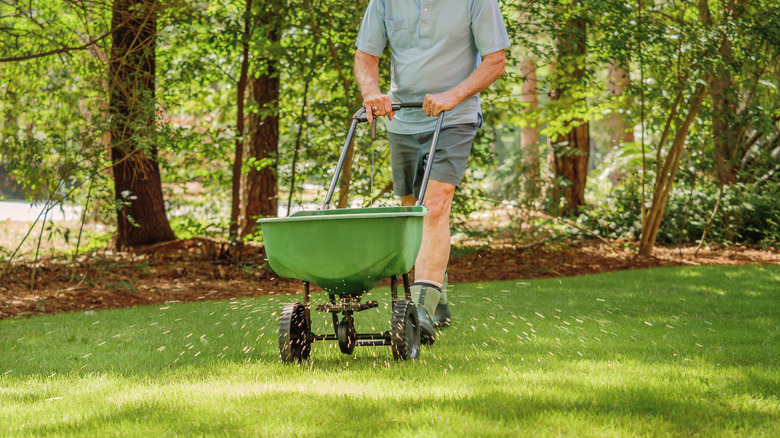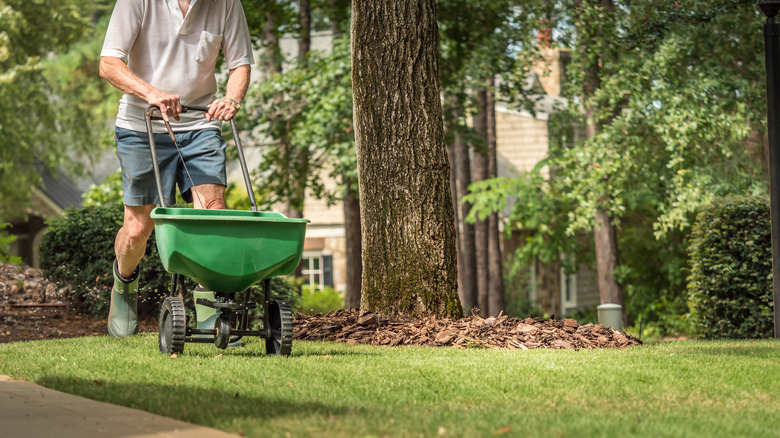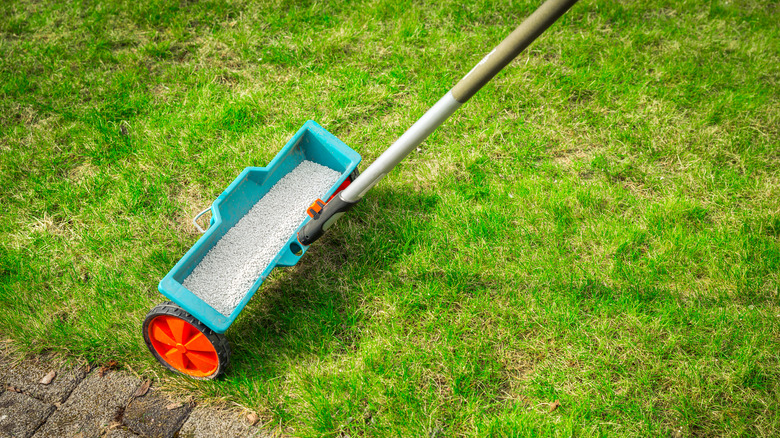Grass Seed Or Fertilizer: Which Should You Start With?
Having a beautiful and lush lawn is a source of pride for many people. Even if you aren't dedicated to home landscaping, patchy or bare lawns are never pleasant to look at. This is why, when spring comes around, many people take time to rebuild their lawns. This can be done by introducing other plants to flesh out the gaps, but you should also prioritize the grass itself.
There are two ways people commonly regrow or replenish their lawns — grass seed and fertilizer. Both of them work fine on their own, but they work even better together. That is, as long as you apply them correctly, including when you apply them, how much you use, and, importantly, in what order. Some grass seed already has fertilizer built into it, but if you want more control over the process or want to fertilize other lawn plants at the same time, you should do them separately.
Start with grass seed
Gene Caballero, the co-founder of GreenPal, told Homes & Gardens that you should start with grass seed but plan ahead. This is because grass seed is very fragile before it settles and begins to develop a root system, and heavy fertilizers could bog it down and even damage the seeds, preventing them from sprouting.
It's generally recommended to seed before the first frost of the fall for cool season grass, but if you want to knock out both seeding and fertilizing at once, or you're planting warm season grass, start by laying out your seeds in the early spring. After up to three weeks, the grass should have developed a sturdy root system that can support the fertilizer, meaning you're good to go on fertilization. If you're concerned about your grass seed rooting in the first place, though, you could opt for starter fertilizer instead of lawn fertilizer, which has more phosphorus to help the seeds sprout quicker. This fertilizer should actually be applied at the same time as your grass seed.
Application tips
Before applying grass seed or fertilizer, you should do a few things to prepare your yard. For example, the soil itself should be in good shape so the seed can properly root, giving the fertilizer something viable to work with. Make sure the soil isn't compacted, too low, or too high in any particular area, and take care to remove more obvious debris like twigs or pebbles. Use a till to break up dense soil and a rake to even out lumpy soil.
Water is also important for both your grass seed and fertilizer. The seed itself should be kept well watered until it's firmly grown a few inches, and fertilizer needs a wet lawn to stick to. For both the seed and food, you should use a spreader tool for application. Check the product's specifics on the bag, as it will tell you how much to spread and how, but seed and fertilizer can be applied in a mowing pattern, starting at the edges and working your way in.


